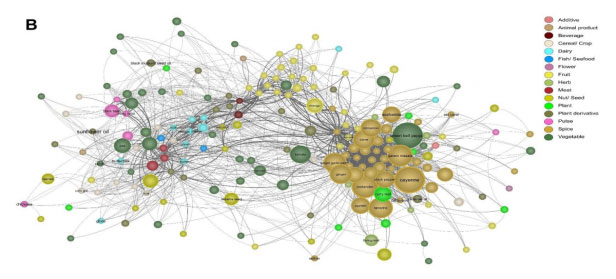Best of 2015: Data Mining Indian Recipes Reveals New Food Pairing Phenomenon
The food pairing hypothesis is the idea that ingredients that share the same flavors ought to combine well in recipes. For example, the English chef Heston Blumenthal discovered that white chocolate and caviar share many flavors and turn out to be a good combination. Other unusual combinations that seem to confirm the hypothesis include strawberries and peas, asparagus and butter, and chocolate and blue cheese.

But in recent years researchers have begun to question how well this hypothesis holds in different cuisines. For example, food pairing seems to be common in North American and Western European cuisines but absent in cuisines from southern Europe and East Asia.
Today, Anupam Jain and pals at the Indian Institute of Technology Jodhpur say the opposite effect occurs in Indian cuisine. In this part of the world, foods with common flavors are less likely to appear together in the same recipe. And the presence of certain spices make the negative food pairing effect even stronger.
Keep Reading
Most Popular
Large language models can do jaw-dropping things. But nobody knows exactly why.
And that's a problem. Figuring it out is one of the biggest scientific puzzles of our time and a crucial step towards controlling more powerful future models.
How scientists traced a mysterious covid case back to six toilets
When wastewater surveillance turns into a hunt for a single infected individual, the ethics get tricky.
The problem with plug-in hybrids? Their drivers.
Plug-in hybrids are often sold as a transition to EVs, but new data from Europe shows we’re still underestimating the emissions they produce.
Google DeepMind’s new generative model makes Super Mario–like games from scratch
Genie learns how to control games by watching hours and hours of video. It could help train next-gen robots too.
Stay connected
Get the latest updates from
MIT Technology Review
Discover special offers, top stories, upcoming events, and more.